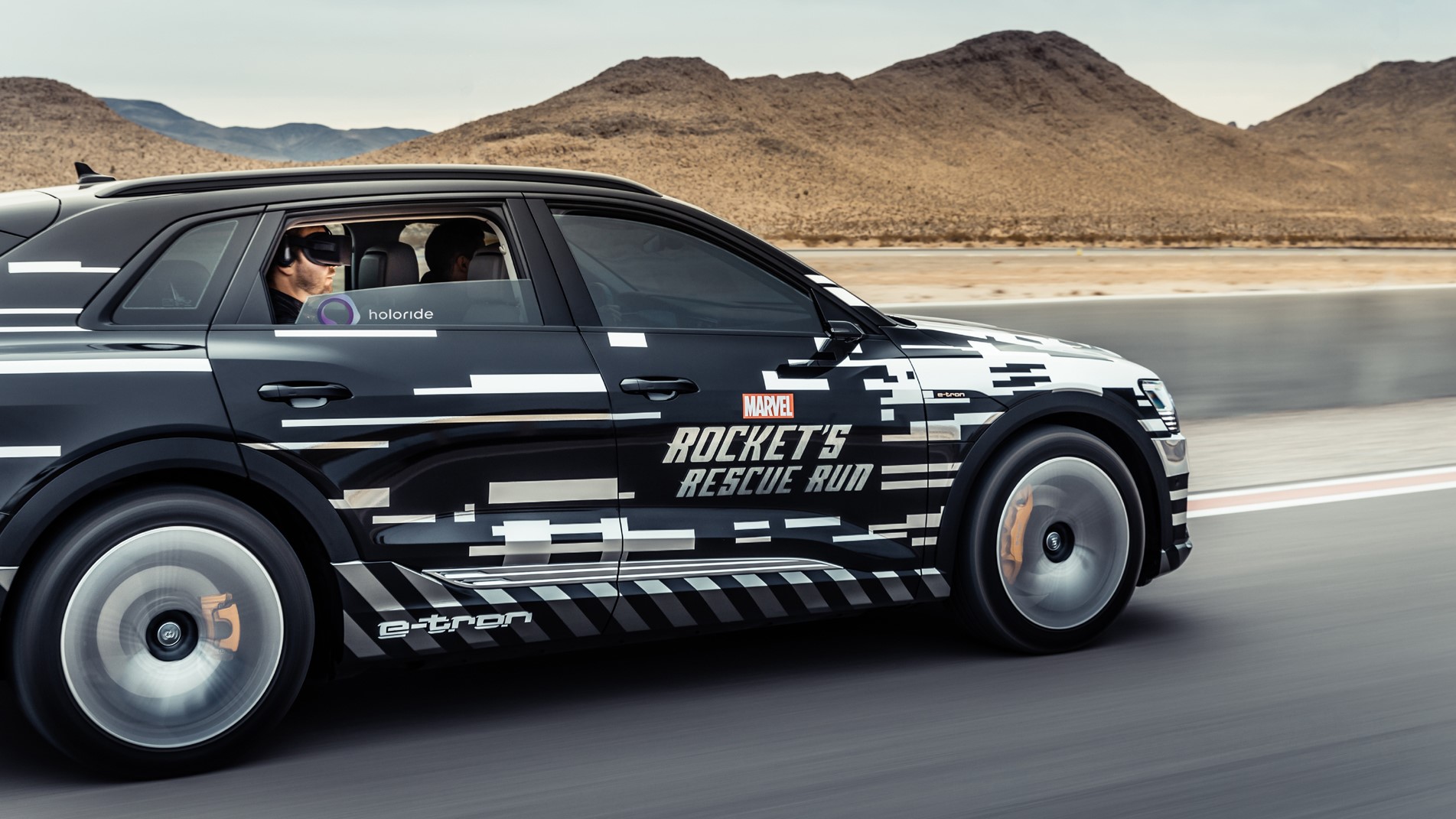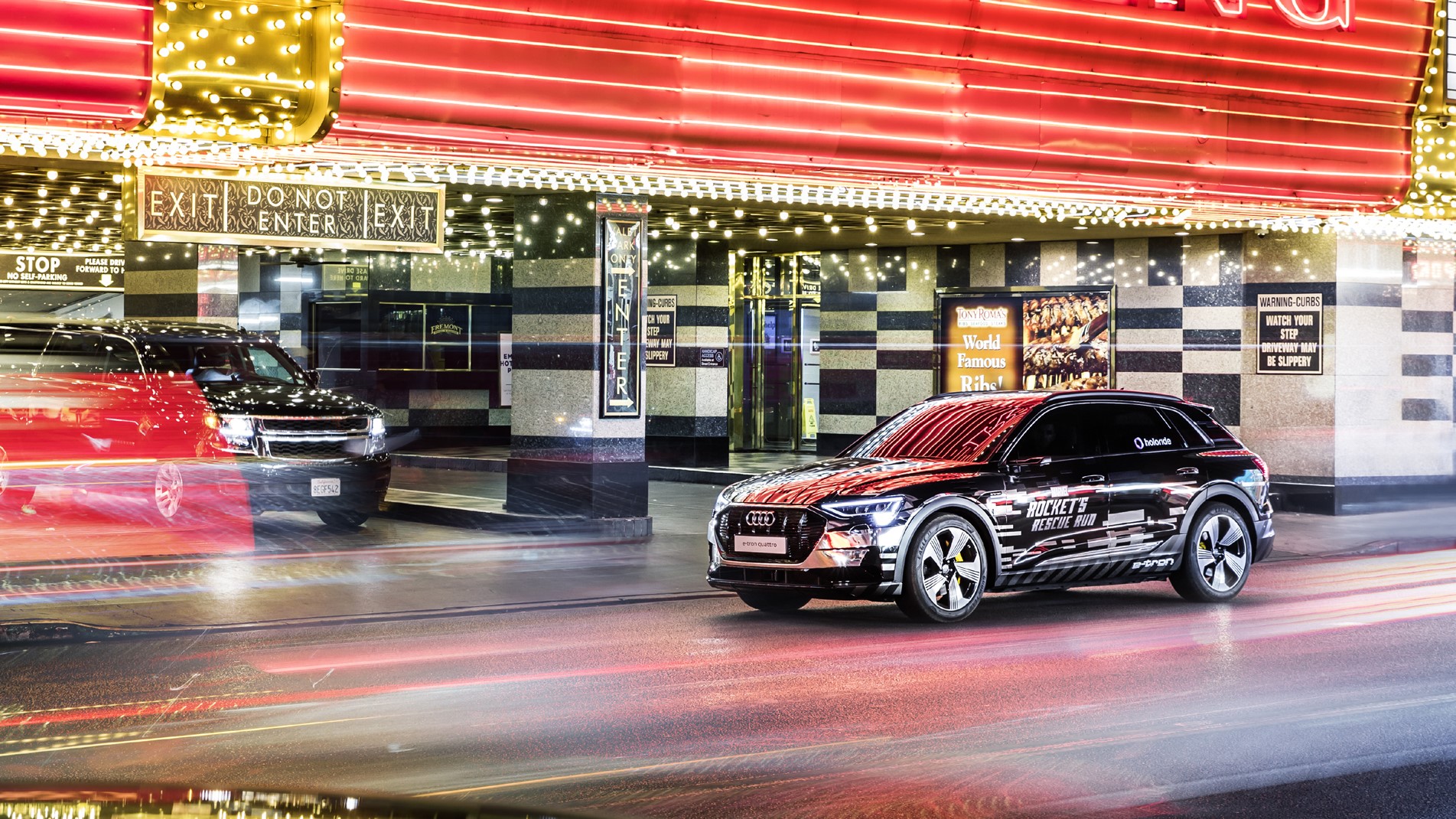Say hello to Holoride, Audi’s revolutionary in-car VR platform
Buckle up and plug in

Take a seat, strap on the VR headset and shoot ‘em up. According to Audi, that’s the future of in-car entertainment. Could it also be the application that finally sees virtual reality make it as a mainstream media?
To find out, we flew all the way to Las Vegas for a pre-CES demo of a new technology Audi is backing, known as Holoride. It’s not just Audi involved, either. The German car maker is a minority partner in the new startup, which not only aims for industry-wide adoption from multiple car manufacturers, plus ride-hailing outfits including Uber. It also has backing from none other than Disney, who cooked up the slick software for the game Audi demoed.
VR with a twist
The basic idea is simple enough, namely playing VR games in a car. It’s the detailed application that makes Holoride so exciting and intriguing. Hardware-wise, we’re talking Audi’s hot new E-tron all-electric SUV fitted out with Oculus Rift headsets and a high-performance PC. The game itself is a one-off for the demo based in Disney’s Marvel universe or more specifically the Avengers franchise. You play Rocket Raccoon rushing to Iron Man’s rescue as he flees the obligatory Thanos offensive.

Here’s where Holoride gets really clever. It’s plumbed directly into the car’s telematics. That means it can pick up data including steering angle, throttle position, brake application and navigation. In other words, the game knows not only what the car is doing in any given moment, it has a map of where it’s going.
The upshot? Every movement of the E-tron is precisely mirrored in-game. Yup, every twitch of the steering wheel, every stomp of the brakes. In the game, you or rather Rocket is the gunner onboard Quill’s Milano ship, using the Oculus’ head tracking for aim and a single-button controller to unleash Rocket’s fury on the Thanos collective. As our E-tron was driven around a test track near Las Vegas, the trajectory of Rocket’s ship mirrored the car’s every move.
Stupidly exciting
Against all expectations, the technology really works. Using the E-tron as a sort of glorified force feedback gaming seat makes for a stupidly exciting and incredibly immersive experience. Add in some slick graphics from Disney and a typically wise-cracking Avengers script and you have not only a VR experience to remember, but also a car journey that seems to compress time, which is very much the point.

If anything, it might be too exciting. The five minute demo leaves you not only a little wired and strung out, but also a little nauseous, albeit perhaps not as much as you would expect given the intensity of the ride.
Get daily insight, inspiration and deals in your inbox
Sign up for breaking news, reviews, opinion, top tech deals, and more.
The latter problem is something that’s familiar to both users of in car entertainment and VR gamers in a static environment. You might think combining the two is a vomitously bad idea. Not so, according to the co-founder of Holoride and Audi’s head of digital business, Nils Wollny. He says this cutting-edge VR tech actually reduces in-car nausea.
“With this technology, we don‘t ‘cure’ motion sickness,” Nils explains, “but we do reduce it significantly. Some people consuming conventional media in cars get motion sickness and this technology brings that number down. Our research showed three times as many people did not experience motion sickness.”
Nils says this application also reduces purely VR-related sickness and that this will only get better as VR devices gain resolution and lose latency. Given the Holoride platform has only just emerged and commercial applications are a few years away at least, Niles reckons there’s plenty of time for improvement.
What’s more, rollicking space combat is far from the only possible content for this new technology. “Some of our demos aren’t tied to a route and can work without connection to the navigation” Nile says. “Some are based on more peaceful environments, where you’re exploring a world populated by a few interactive elements. Of course you can also tie in geolocated events, points in the real world where new characters appear, for instance.”
Into the real world
Question is, then, how is this demonstration platform going to translate into a possible real-world product? “We want to be completely agnostic to car manufacturers, manufacturers of XR devices, and content creators. We want to create something that makes sense for users. Once they’ve purchased a standalone XR device, they can step into the back seat of the car they already own and enjoy this.”
Really? A car they already own? That’s where it gets a little complicated. Some existing cars do already have the sort of telematics required to make this technology possible. But it would mean making relevant in-car APIs available. “We’re exploring different opportunities. In the next months we will be announcing something,” Nils says.

The main point is that Nils and indeed Audi understands that this can’t be a single-brand effort. “We want users to experience this and the only way it can take off is if it’s agnostic to car and XR device manufacturer.”
Overall, it’s a technology that feels at least a few years away. That’s because it will take a little time to get all all the various participants onboard, not least content creators of whom Holoride can currently only claim Disney. But importantly, that’s not because it doesn’t work or it’s fundamentally a silly idea. It’s the kind of concept that seems frivolous right up to the
Technology and cars. Increasingly the twain shall meet. Which is handy, because Jeremy (Twitter) is addicted to both. Long-time tech journalist, former editor of iCar magazine and incumbent car guru for T3 magazine, Jeremy reckons in-car technology is about to go thermonuclear. No, not exploding cars. That would be silly. And dangerous. But rather an explosive period of unprecedented innovation. Enjoy the ride.